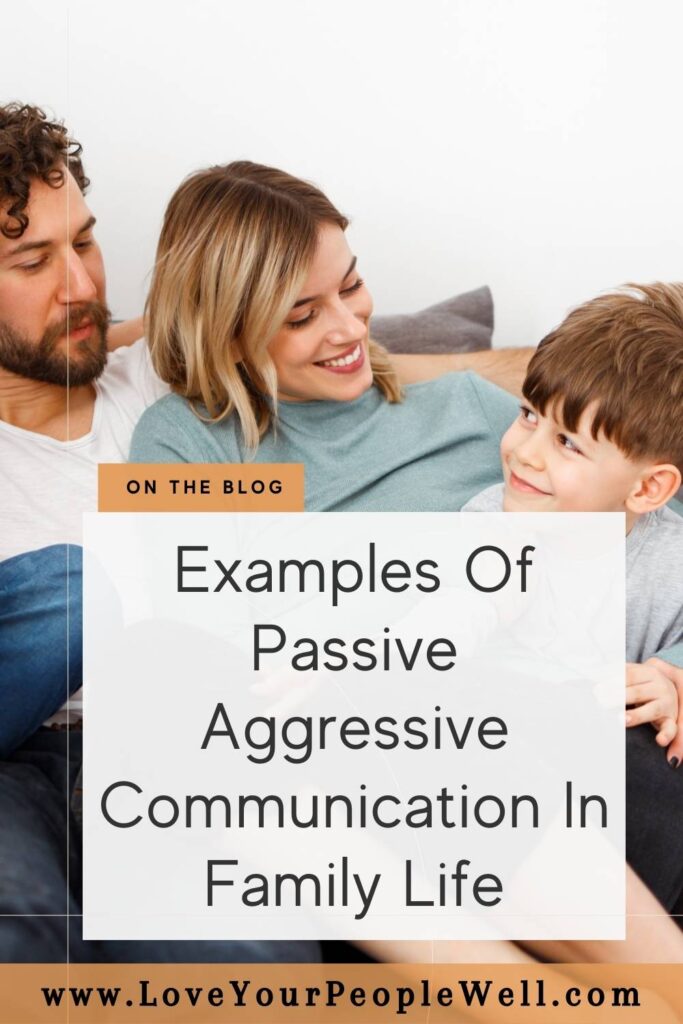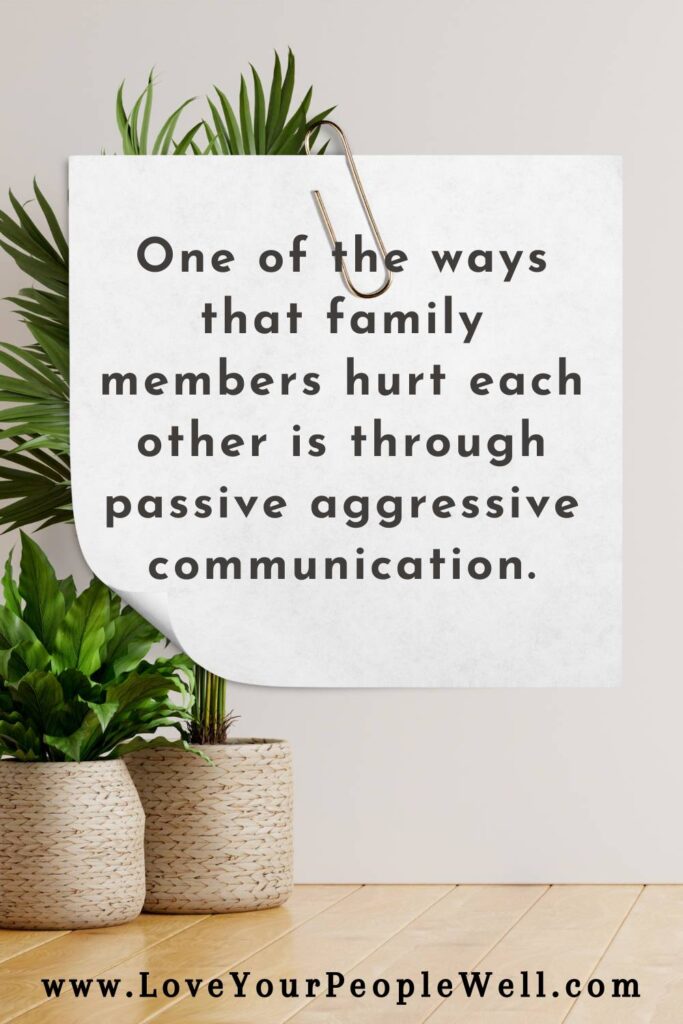Learn from these examples of passive aggressive communication in family life, so you can strengthen your own family communication patterns.
Passive aggressive communication is way too common
Passive aggressive communication is a common family issue.
We all know it isn’t healthy, it doesn’t make us happy… but it can be hard to talk about hard emotions! We all can struggle.
If you’re struggling with communication in your marriage, with your kids, or in your home, passive aggressive behaviors might have something to do with it.
So today, let’s look at some examples of what this might look like in your Christian home… so that next week, we can dive into some tips for how to stop it!
Let’s get on track with healthier, happier, and holier family communication, friend!
[This post may contain affiliate links. If a purchase is made, I may receive a small commission at no extra charge to you.]
What is passive aggressive communication?
One of the sneaky ways that family members hurt each other is with passive aggressive communication.
But… what is it?
Let’s start with a basic definition. Passive aggressive communication happens when you speak or act in ways that express your frustration, disappointment, or anger… in an indirect way.
Typically, this includes your tone of voice, body language, and behaviors.
So, when passive aggressive communication is happening, you are saying or acting as if something is true… but it’s not honest to your real emotions and feelings.
And when this type of communication enters our homes, it hurts our family relationships.
RELATED: 6 Tips For How To Stop Being Passive Aggressive In Your Home
Examples of passive aggressive communication
Do any of these sound familiar?
- Claiming you are “fine” when you are obviously upset and angry
- Repeatedly complaining about a past event, while telling everyone that it is not a problem
- Denying anything is wrong… while giving heavy sighs, pouting, slamming doors, or having a sullen attitude
- Sarcasm, such as “Wow, thanks for finally taking out the trash!”
- Using the silent treatment with people or avoiding them
These are all common examples of passive aggressive communication!
When you are feeling an emotion but trying to pretend that it isn’t there or that it isn’t impacting you, this is not only dishonest – it’s unhelpful in your relationships.
These examples of passive aggressive communication are not really helping you enjoy family life or build intimacy in your relationships.
RELATED: The Ultimate Guide For How A Wise Woman Builds Her Home
Examples of passive aggressive communication… in your marriage
I’ve been a marriage counselor for almost 15 years, and I’m still surprised when mature adults tell me they give each other the silent treatment when they are upset!
Does this solve marriage conflict? Is it helpful for building marriage intimacy? Definitely not.
For women, there is also a common pattern of claiming to be “fine” when you truly are not. (And then, often getting upset with your husband because he believes you when you say you’re fine.)
RELATED: Should You “Forgive And Forget” Within Your Marriage?
Beyond these, one of the biggest examples of passive aggressive communication in a marriage is procrastinating on taking care of something that you know is important to the other person.
Sometimes, of course, you might genuinely forget to fill the gas tank in the car or move the laundry from the washer into the dryer. But other times, you might be angry or annoyed with your spouse… and use the “I forgot” card when really you were just refusing to do it for them.
So consider…
- Do you ever use the “silent treatment” with your husband?
- If he asks how you’re doing, are you telling him you’re “fine” when that’s not really true?
- Do you procrastinate or avoid doing things he wants/needs… just because you’re annoyed with him?
Examples of passive aggressive communication… in your parenting
Usually in parenting, we get frustrated with our kids (especially teens!) showing passive aggressive behavior toward us.
But it is definitely possible to show passive aggressive communication to your kids. You might not even realize it’s happening sometimes!
These examples of passive aggressive communication can easily slip into our parenting:
- Expressing sarcasm when you are frustrated. Something like: “Well of course you’re whining, what other option is there?”
- Giving backhanded compliments, such as “Your hair actually looks good today, I guess you finally combed it.”
- Lying to your kids to avoid their reaction to something
Are these statements or attitudes honest with your children? Do they build intimacy and trust? Connection?
Nope. Parenting can bring a lot of hard emotions, but we need to learn to manage those emotions! Otherwise they can slip out in passive aggressive ways.
What to do if these examples of passive aggressive communication are happening
If some of these examples of passive aggressive communication are hitting close to home, you are not alone!
It can be difficult to manage hard emotions, and especially when you’re a busy mom and family life is feeling overwhelming, you might slip into some bad habits.
When that happens, try a different path.
- Identify when it’s happening,
- bite your tongue, and
- try a different comment or action.
If you recognize that you are behaving in a passive aggressive way, it’s probably most helpful to do the opposite action.
If you’re giving the silent treatment, reach out to start a conversation. When you find yourself speaking sarcastically, take a deep breath and offer a genuine compliment.
It can be hard to break bad habits, like these examples of passive aggressive communication. But it is always possible! Recognize what’s happening, decide to change it, and try something different.
RELATED: 6 Tips For How To Stop Being Passive Aggressive In Your Home
Pin for encouragement later!
Listen to Episode #210
Let's connect!
- JOIN MY EMAIL LIST for weekly tips, gospel encouragement, and a new coupon code each month.
- JOIN THE FAITH FIVER CLUB in our Patreon community, to support the ministry and get exclusive access to our private podcast, Q&As, and more.
- JOIN ME ON PINTEREST and on Facebook and Instagram too, for regular encouragement and fun.
And as they say... sharing is caring!
Disclaimers: I am a licensed therapist but my podcast, blog, and resources are not professional or personal advice. I am an affiliate for many of the resources that I link to, and may earn a small commission if you purchase through my link. Read my full disclaimer here.





